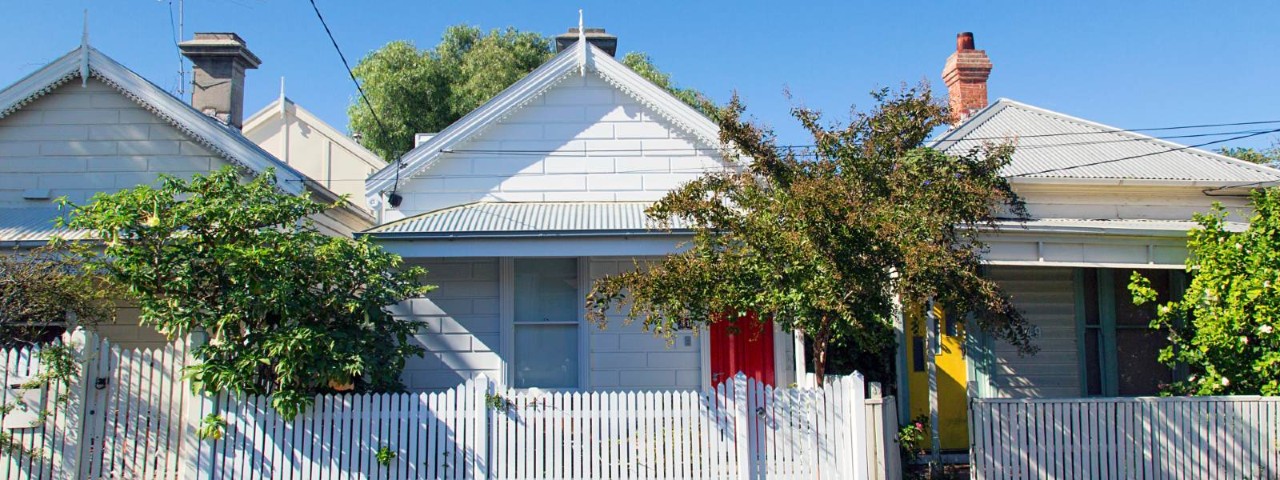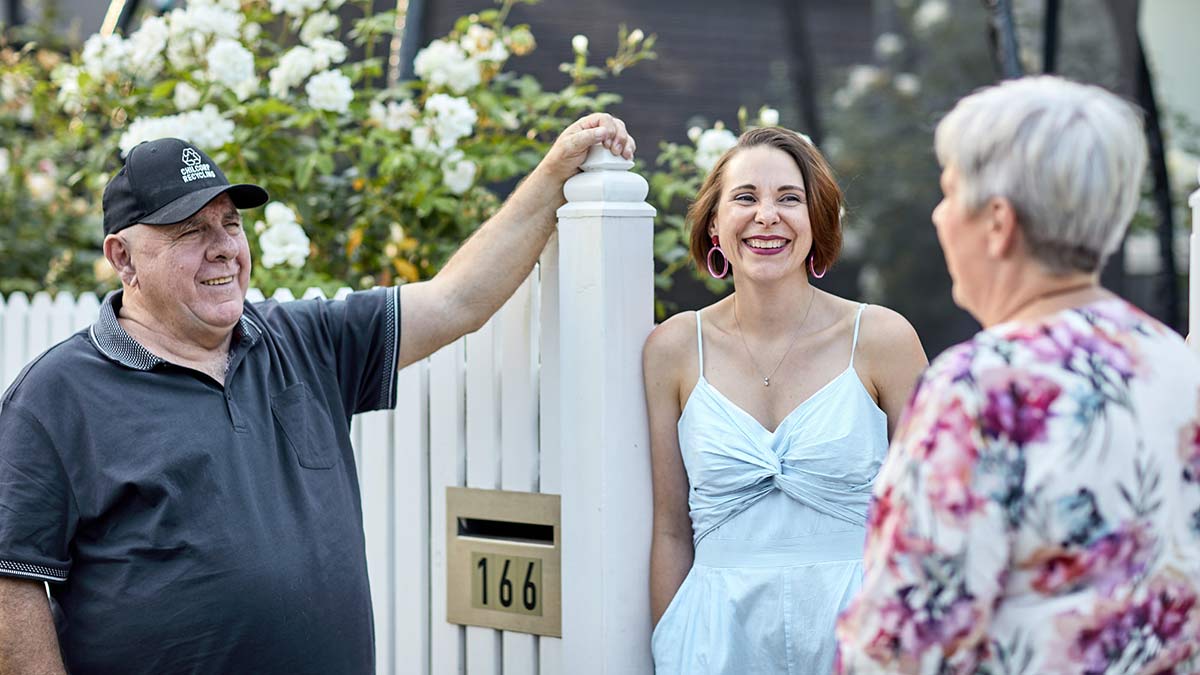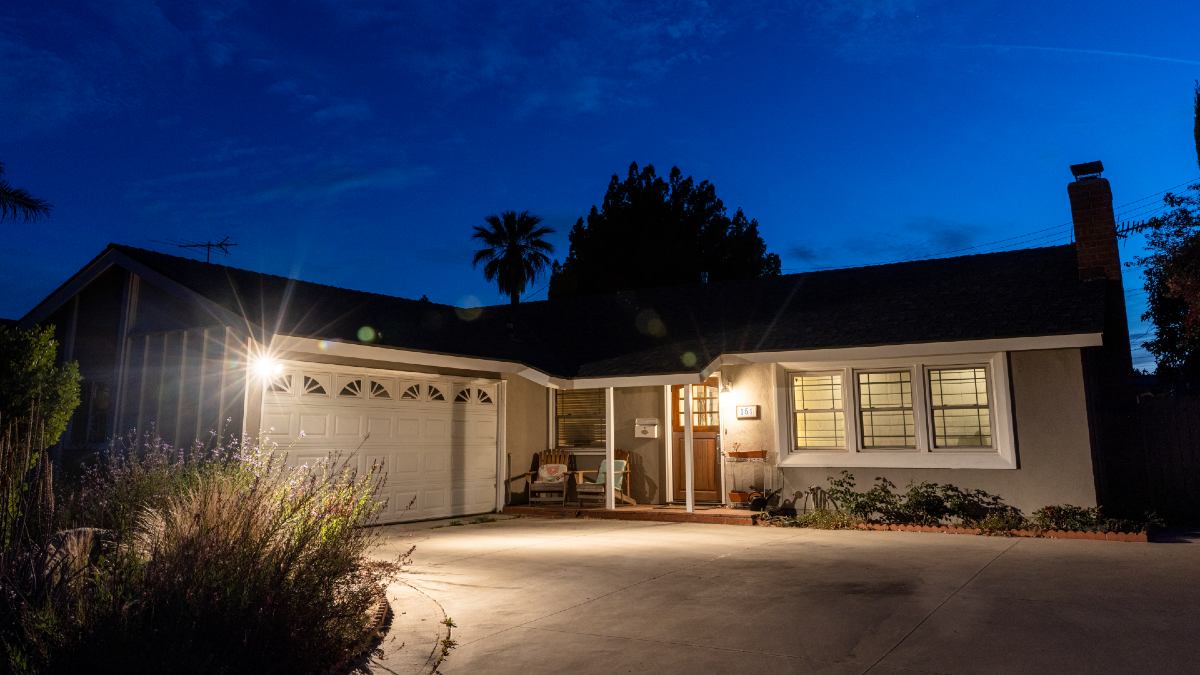Your home is a top target for burglars when you go on holidays. Here’s what burglars are looking for when they break and enter your home, plus how to safeguard your house.
How to improve security in your neighbourhood

Secure streets and neighbourhoods make criminals less likely to approach your property. Here’s how to improve security in your street and local community.
There were 112,136 property and deception offences in 2023, according to the Victorian Crime Statistics Agency (CSA). These offences included burglary, theft, breaking and entering, and property damage. That was a 9 per cent increase from the previous year.
The 2023 RACV My Home survey also revealed that 92 per cent of participants found home safety to be the most important factor for liveability, with it rating higher than housing affordability or proximity to services.
Neighbourhood Watch CEO Bambi Gordon encourages Victorians to work with their neighbours to improve security in their street or court, which can discourage criminals from targeting their property.
“A connected community is a safer community,” says Gordon. “People feel safer when they know their neighbours and look out for one another.”
Along with checking that your home insurance is up to date, here are some top tips to increase your street and neighbourhood's security.
How to make your street safer from theft
Join Neighbourhood Watch
“One of the best things you can do to improve security in your street is to join your local Neighbourhood Watch group,” Gordon says.
Neighbourhood Watch started in Victoria in 1983 as a Victorian Police community program to help prevent crime. Since 2013 it has been an independent not-for-profit organisation, with tens of thousands of volunteers working in partnership with local police.
Neighbourhood Watch members can report any suspicious behaviour or criminal activity to their community and police, so that local residents can stay alert and law enforcement can respond more efficiently. They can also share safety and security tips and put up signs to let criminals know that the neighbourhood is being proactive.
Other ways that Neighbourhood Watch groups can boost community engagement include starting a street walking group, organising a street barbecue or picnic, growing a community garden, creating regular playdates for neighbourhood kids or dogs, starting a book club, or hosting backyard cricket or soccer games.
If there isn’t yet a Neighbourhood Watch group in your area, start one and invite your neighbours to join.

Forming good relationships with your neighbours can boost community security. Image: Getty
Have a system in place for absent neighbours
Having a sense of community encourages residents to look out for one another. This is especially important when you or your neighbour is away from the home for an extended period.
If you go on a road trip or a holiday, ask your neighbours to make it look like you’re still home by:
- Collecting your mail
- Putting out and taking in bins
- Parking their car in your driveway occasionally
- Switching your exterior lights on at night.
“Criminals are generally risk-averse, so they prefer to target homes they think are empty,” Gordon says. “Making your home look occupied can help dissuade burglary.”
Improve your street lighting
Darkness is a criminal’s best friend. It hides their suspicious activity and allows them to approach properties at will.
If your streetlights aren’t adequate, contact your local council for help.
In your street, encourage neighbours to turn on exterior lights in the evening and install motion-sensor floodlights around entry points to their home.

Motion-sensing floodlights can help deter burglars. Image: Getty
Keep your street clean
Neglected properties and streets can encourage burglars and vandals.
Organise a community clean-up in your street or neighbourhood. You and your neighbours can clear away litter, remove graffiti, and trim overgrown bushes and trees. This tells criminals that you care about the area and pay attention to what’s happening in the neighbourhood. Working together is also a great way to strengthen community spirit.
Keep your own property well maintained by locking your doors and windows, keeping fences repaired, and taking care of your garden.
Consider installing security cameras and alarms
Some neighbourhoods hire security patrols to actively patrol their streets in the hope of preventing crime. But legitimate organisations like Neighbourhood Watch don’t encourage this practice.
“Patrols are usually not that effective in preventing crime,” Gordon says. “Residents tend to rely upon security patrols as a silver bullet in deterring crime and may become lackadaisical in their own security measures. The simple existence of patrols also contributes to people’s fear.”
Instead, consider installing security measures like CCTV or alarms. Criminals don’t want to be caught and are much less likely to approach areas they know are guarded by security technology.
The information provided is general advice only. Before making any decisions, please consider your own circumstances and the Product Disclosure Statement and Target Market Determinations. For copies, visit racv.com.au. As distributor, RACV Insurance Services Pty Ltd AFS Licence No. 230039 receives commission for each policy sold or renewed. Product(s) issued by Insurance Manufacturers of Australia Pty Ltd ABN 93 004 208 084 AFS Licence No. 227678.
RACV Security Pty Ltd ABN 49 079 148 342 trading as RACV Home Security. Security Licence (Vic.) 733-411-10S and Security Registration (Vic.) 733-411-31S.


